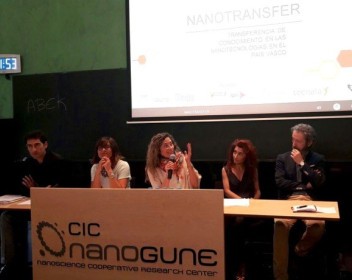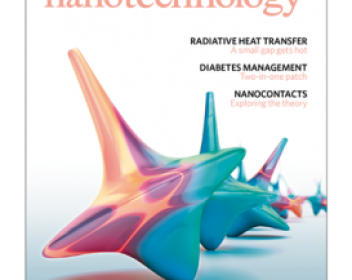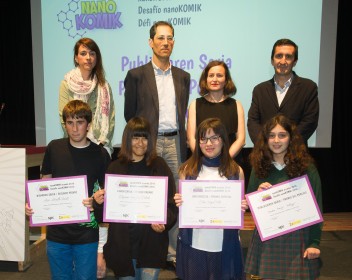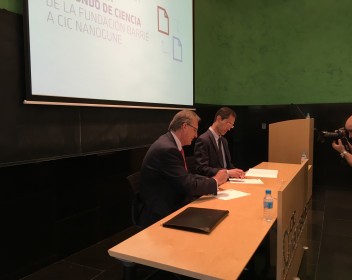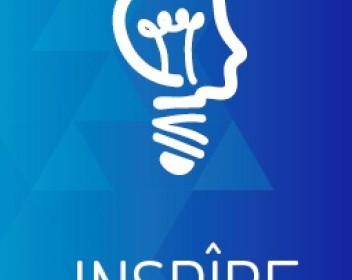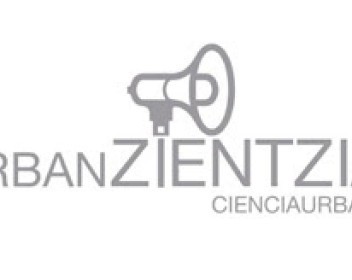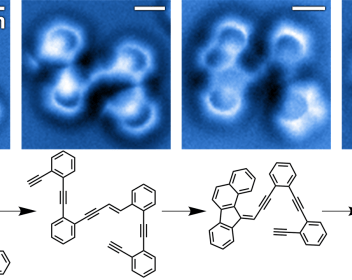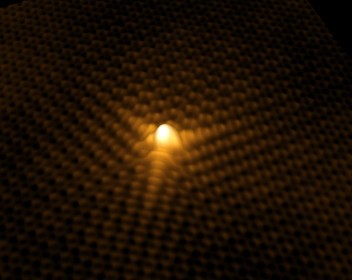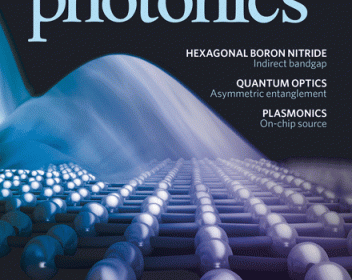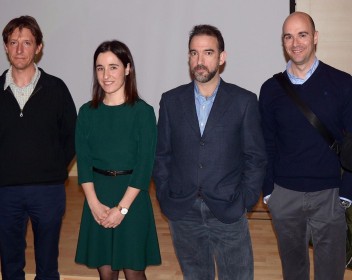Newsroom
News
Measures to increase business demand for nanotechnology
The Nanotransfer consortium identifies nanoscience as an essential strategy for the productive transformation of the Basque Country. Researchers and experts at Orkestra-Basque Institute of Competitiveness, Tecnalia, CIC Nanogune, NanoBasque-Spri, and the Universities of Deusto and of the Basque Country, have collaborated in a project analysing the development and implantation of nanoscience, micro- and nanotechnology in the Basque Country. This project, known as Nanotransfer, identifies commitment to nanoscience as an essential strategy in the production transformation process in the Basque Country and emphasises the need to speed up the incorporation of nanotechnologies into manufacturing processes and into products marketed.
Reconfigurable magnetic nanopatterns
A team of international scientists led by researchers of the CUNY Advanced Science Research Center (ASRC) and the Politecnico of Milan, and involving researchers from nanoGUNE, has demonstrated a novel approach for designing fully reconfigurable magnetic nanopatterns whose properties and functionality can be programmed and reprogrammed on-demand. The research has been featured on the June 2016 issue of Nature Nanotechnology.
Heart failure and immigrants, winners of the nanoKOMIK prizes
The prize-giving in the nanoKOMIK challenge took place this afternoon at the headquarters of the DSS2016 (Donostia-San Sebastian Capital of Culture 2016). The first prize was for Crisis cardíaca (Heart Failure), a work that explores applying nanotechnology to biomedicine and which was produced by Dayanne Huayhua (Aranjuez). The second prize went to Asier Murillo (Iruñea-Pamplona) for his comic Milan Man, a topical story about immigration in the Mediterranean. The audience prize and a special prize were also awarded.
An agreement to encourage research and transfer it to the market
In Donostia-San Sebastian today, José María Arias-Mosquera, Chairman of the Barrié Foundation, and Jose Maria Pitarke, CEO of CIC nanoGUNE, signed an agreement which will allow nanoGUNE to implement the methodology that the Barrié Foundation has developed through its Science Fund for the transfer of scientific and technological results to the market.
The CENTINELA project, a winner in the Inspire programme
This week Petronor has presented the first appraisal of the agreement with the Department of Economic Development and Competitiveness of the Government of the Basque Autonomous Community (region), and has announced the three award-winning projects in the Inspire open innovation programme. They include the CENTINELA project developed by the CIC nanoGUNE, Materials Physics Center and the University of Burgos.
CIC nanoGUNE will be participating in the Urbanzientzia event
NanoGUNE is set to participate in the Urbanzientzia event. The event organised by TEKNAHI within the framework of OLATU TALKA, which is part of the DSS2016 (Donostia-San Sebastian Capital of Culture) programme, is aiming to take science into the street.
The intermediates in a chemical reaction photographed ‘red-handed’
Researchers at the Materials Physics Center CSIC-UPV/EHU, the DIPC, and CIC nanoGUNE, in the framework of an international collaboration, have for the first time imaged and identified the bond configuration of the intermediates in a complex sequence of chemical transformations of enediyne molecules on a silver surface, thus resolving the microscopic mechanisms that account for their behaviour. This piece of research has
been published in the latest issue of the journal Nature Chemistry.Atomic magnets using hydrogen and graphene
NanoGUNE researchers in collaboration with the Autonomous University of Madrid and the Institut Néel of Grenoble have shown for the first time that the simple absorption of a hydrogen atom on a layer of graphene magnetises a large region of this material. By selectively manipulating these hydrogen atoms, it is possible to produce magnetic graphene with atomic precision. The work has been published in the prestigious journal Science.
nanoGUNE research appears on Nature Photonics cover
Spin injection in two-dimensional layered materials, PhD thesis by Oihana Txoperena
Oihana Txoperena, Pre-doctoral Researcher at the Nanodevices Group at CIC nanoGUNE, received her PhD at the University of the Basque Country (UPV/EHU) after the defense of her thesis project on 8th April 2016. Her research work, entitled “Spin injection in two-dimensional layered materials", has been developed under the supervision of Dr. Fèlix Casanova, Ikerbasque Research Professor at the Nanodevices Group.
Agenda
| Mon | Tue | Wed | Thu | Fri | Sat | Sun |
|---|---|---|---|---|---|---|
|
29
|
30
|
31
|
1
|
2
|
3
|
4
|
|
|
|
|
|
|
|
|
|
5
|
6
|
7
|
8
|
9
|
10
|
11
|
|
|
|
|
|
|
|
|
|
12
|
13
|
14
|
15
|
16
|
17
|
18
|
|
|
|
|
|
|
|
|
|
20
|
21
|
23
|
24
|
25
|
||
|
|
|
|
|
|
||
|
30
|
31
|
1
|
||||
|
|
|
|
Events
- 29/01/2026
Frontiers in Quantum Electronics
- 04/02/2026 to 06/02/2026
nanoGUNE Winter School 2026
nanoVISUALS
Find events' photos, experimental images, videos, audios, and nanoGUNE's corporate images.

